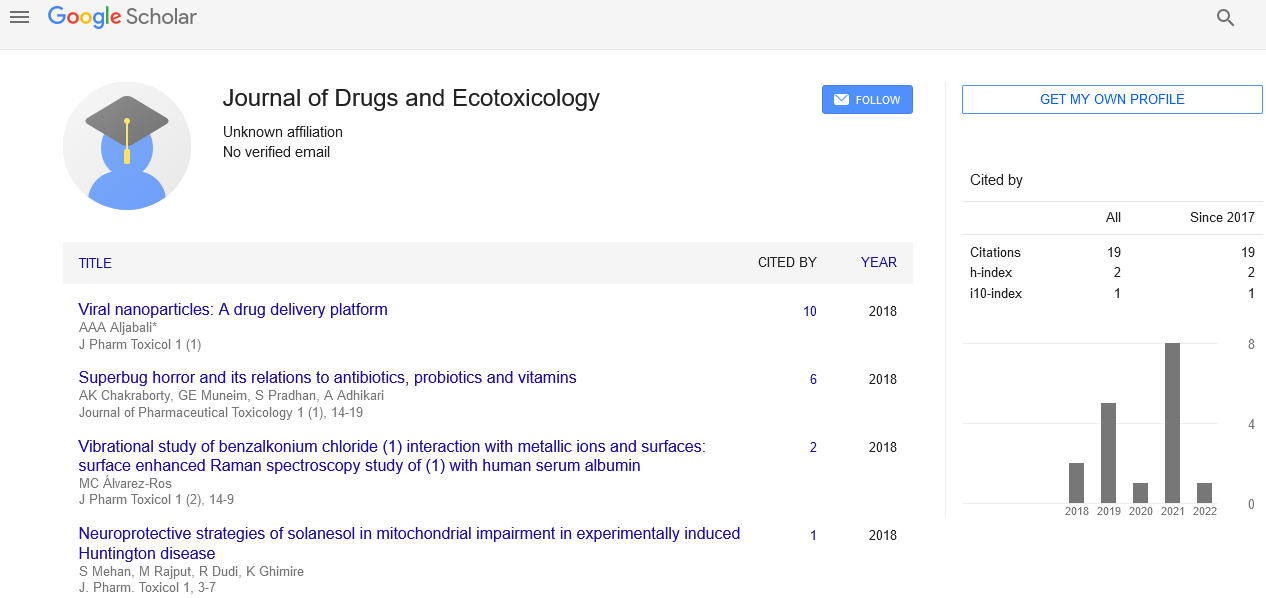Modern techniques for manufacturing polymer-based drug delivery matrix
Received: 03-Mar-2022, Manuscript No. puljde-22-5237; Editor assigned: 05-Mar-2022, Pre QC No. puljde-22-5237 (PQ); Accepted Date: Mar 22, 2022; Reviewed: 21-Mar-2022 QC No. puljde-22-5237 (Q); Revised: 21-Mar-2022, Manuscript No. puljde-22-5237 (R); Published: 29-Mar-2022, DOI: 10.37532.puljde.22.5.2.17-18
Citation: Hoffman E. Modern techniques for manufacturing polymer-based drug delivery matrix. J Drug E. 2022: 5(2):20-21.
This open-access article is distributed under the terms of the Creative Commons Attribution Non-Commercial License (CC BY-NC) (http://creativecommons.org/licenses/by-nc/4.0/), which permits reuse, distribution and reproduction of the article, provided that the original work is properly cited and the reuse is restricted to noncommercial purposes. For commercial reuse, contact reprints@pulsus.com
Abstract
One of the cutting-edge areas of biomedical research is the investigation of innovative medication delivery systems. Major improvements in drug bioavailability, rate of release, cell/tissue selectivity, and therapeutic index have been made using multidisciplinary scientific techniques combining conventional or tailored technology. These systems typically start with biodegradable and bioabsorbable polymers as their building blocks, and delivery components are made from their copolymers. In silica-supported models have been created to replace time-consuming empirical approaches for the optimization of these formulations. These techniques can anticipate and fine-tune the delivery of various medications beginning with pre-planned combinations. Beginning with these ideas, this review's objective is to examine current methods for creating polymeric carriers and their integration with experimental techniques as prospective platforms in the biomedical industry.
Keywords
Anti-Inflammatory Drugs; Superoxide Dismutase
Introduction
To boosts the therapeutic efficacy of medications and vaccines drug delivery systems are used to transport them to a specific region within the body with a regulated release. These objectives are first achieved by improving the solubility and chemical stability of the therapeutic agents, followed by improving their pharmacological activity, minimising negative effects, and providing and maintaining therapeutic agent concentrations at the targeted site. Due to their distinctive qualities, such as biocompatibility, biodegradability, lowcost materials, easy scalability, and surface functionalization, biodegradable polymeric-based systems in the micro- and nanometer range (emulsions, particles, needles, and fibres) have become very popular among drug delivery devices. In the previous years, the encapsulation of pharmaceuticals into electro spun fibrous matrices represented an efficient approach for the in situ delivery, due to the biocompatibility, flexibility and easy and cost-effective production of the polymeric fibers. Electrospun fibers can incorporate active agents within the lumen thanks to their porosity character or biomolecules can be immobilised on the surface of the molecules through either chemical immobilization or physical adsorption. Through electrospinning process variables (tip of the needle-collector distance, flow rate, high voltage, and collector geometry), process parameters (selected polymers and solvents, conductivity, and viscosity), and environmental factors, it is possible to control the porosity, structure, morphology, and consequently the drug release. An effective method for in situ drug delivery in recent years has been the encapsulation of medicines into electro spun fibrous matrices.
The current review focuses on cutting-edge drug delivery methods, including electro spun fibres, oil-in-water layered nano emulsions, polymeric particles, and micro/nanoneedles made using various methods. We also discuss the value of the insilico approach as a top technique for predicting and fine-tuning the release profile. Moreover, the manufacturing processes, advantages, and disadvantages concerning each system will be covered, and at the end, marketing and future perspectives will be addressed.
Nano-technologies
As exceptional delivery options to increase the bioavailability and bio distribution of the medications, polymeric nanoparticles and micro particles have drawn a lot of interest. Alginate, chitosan and PLGA are the most often used polymers to create regulated drug delivery, as previously stated. Probiotic stability during GI transit has been significantly improved by the use of alginate micro particles. Both matrix-based systems (nano spheres) and reservoir-based systems (nano capsules) are referred to as nanoparticles, and they can be distinguished by their morphological traits. A polymeric shell that can regulate the drug's release profile surrounds an oily core that houses the drug in nano capsules. The medicine can either be maintained inside or adsorbed onto the surface of nano spheres, which are made up of an ongoing polymeric network. By increasing solubility and permeability, protecting drugs from degradation, extending their time in the gastrointestinal tract, protecting mucosa from the toxic effects of drugs, and reducing their toxicity by limiting nonspecific uptake, polymeric NPs are a promising tool for improving the efficacy and delivery of poorly water-soluble drugs. In addition to enhancing absorption, first pass metabolism inhibition, improved medication bioavailability, and protection from the cell environment from drug degradation, nanoparticles also acquire the following properties. Making highly designed Nanoparticles (NPs) that can achieve precise targeting to lessen the side effects and toxicity of encapsulated medications is another intriguing feature. Cancer cell membrane coating has taken the position of PE Gylation, and it is able to deliver treatments directly to tumour cells because it combines biomimetic properties with homotypic targeting phenomena. Targeting different tumour cells, such as melanoma and breast cancer, as well as addressing metastasis, required the use of homotypic targeting strategy because cancer cell adhesion molecules exist as membrane receptors, including cadherins, selectin and integrin’s, Immunoglobulin Superfamily (Ig-SF), and lymphocytehoming receptors (e.g., CD44).





